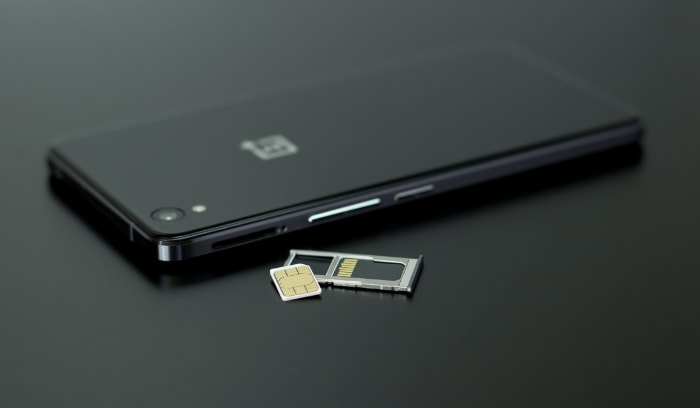What Is SIM Toolkit App? Explained

In the age of smartphones, we often take for granted the intricate technologies that enable us to call, text, and use data services effortlessly. One such critical yet unobtrusive technology is the SIM card, the heart of our mobile devices’ connectivity. However, there’s a little-known application that works silently behind the scenes, enhancing the capabilities of the humble SIM card: the SIM Toolkit app.
SIM Toolkit, or STK, is a standard of the GSM system that enables the Subscriber Identity Module (SIM) to initiate actions that can be used for various value-added services. It’s a key component that bridges the gap between your mobile device and the network carrier, providing an array of services right from your SIM card.
Whether you’re a tech-savvy enthusiast or a casual smartphone user, understanding the SIM Toolkit can offer insightful perspectives on how your mobile device operates on a fundamental level. So, let’s embark on this intriguing journey of discovery.
Introduction to the SIM Toolkit App
The SIM Toolkit (STK) app, sometimes referred to as the SIM Application Toolkit, is a software application embedded in the SIM card that facilitates communication between the SIM card and the mobile device.
This app is not dependent on the device itself, but rather on the SIM card, meaning it can function across different types of mobile devices as long as the SIM card is inserted.
Functions of the SIM Toolkit App
The SIM Toolkit app is designed to provide and manage additional services offered by your mobile network operator.
These services range from basic functions such as accessing your mobile network’s customer support, checking your account balance, and mobile credit top-ups, to more complex services like mobile banking, mobile money transfers, and accessing information services (e.g., news updates, weather forecasts).
Common Uses of the SIM Toolkit App
The SIM Toolkit app is widely used by network operators to provide a variety of services, many of which are location-based or subscription-based. For instance, it can be used to provide localized content such as promotional messages, mobile advertising, or information services relevant to the user’s current location.
It’s also used to facilitate services like mobile payments, enabling users to carry out transactions without needing a separate app for banking or payment services.
Essentially, the SIM Toolkit app acts as a direct line of communication between the user and the network operator, allowing for an array of services that go beyond basic mobile functions. It’s a powerful tool that brings convenience and added functionality directly to the user’s fingertips.
Advantages and Disadvantages of the SIM Toolkit App
Benefits of Using the SIM Toolkit App
Ease of Access to Services: The SIM Toolkit app provides direct access to various services offered by the network operator. This can include mobile banking, account management, customer support, and information services, among others, all accessible from your device without needing an internet connection.
Device Compatibility: Since the app is embedded within the SIM card, it is compatible with any device that the SIM card is inserted into. This allows the services to be available across different types of mobile devices, from basic feature phones to advanced smartphones.
No Internet Requirement: The SIM Toolkit app operates independently of internet connectivity. This means you can access its services even in areas with poor or no internet connection, which is particularly useful in remote or rural areas.
Drawbacks of Using the SIM Toolkit App
Limited Customizability: Unlike regular apps that can be updated or customized based on user preferences, the SIM Toolkit app is controlled entirely by the network operator. The user has no control over which services are included or how they are presented.
Limited to Network Operator Services: The app can only provide services offered by the specific network operator. If a service is not provided by your operator, you can’t add it to the SIM Toolkit app, unlike regular apps that can be downloaded from an app store.
Potential Security Risks: The SIM Toolkit app can be used to send unsolicited messages or perform unwanted actions on the mobile device if misused. While such instances are rare, they can pose a security risk.
Situations Where Using the SIM Toolkit App is Particularly Useful
Despite the disadvantages, there are situations where the SIM Toolkit app shines. It’s extremely useful in areas with limited or no internet connectivity, allowing users to access important services.
It’s also beneficial for people using basic mobile devices that can’t support regular apps or web browsing. In addition, the SIM Toolkit app can be a life-saver in emergencies, providing quick access to necessary services directly from the SIM card.
Safety and Security Aspects of the SIM Toolkit App

The SIM Toolkit app plays an essential role in SIM card security. Since the app resides in the SIM card, it is isolated from the operating system and other applications on the mobile device. This isolation provides a degree of security against common threats, such as malware or viruses that may affect the device’s operating system.
In addition, the SIM Toolkit app is designed to follow strict GSM security protocols, ensuring that any communication between the SIM card and the mobile device is secure. This includes encryption of data and authentication of the SIM card on the network.
Potential Security Risks Associated with the SIM Toolkit App
Despite the inherent security features, the SIM Toolkit app isn’t entirely immune to risks. For instance, it could be exploited by malicious entities to send unsolicited messages or perform unwanted actions. Such instances, while rare, are known as “SIM attacks.”
Another potential risk involves the misuse of the SIM Toolkit app by unscrupulous network operators. For example, they could use the app to track user location or gather personal information without consent. However, such practices would be in violation of privacy laws and regulations in most jurisdictions.
Best Practices to Mitigate Security Risks
To mitigate the potential risks associated with the SIM Toolkit app, users can adopt several best practices.
Awareness: Stay informed about the services provided by your network operator through the SIM Toolkit app. If you notice any unusual activity, report it to your operator immediately.
Privacy Settings: Check the privacy settings of your mobile device. Make sure that any location-based services provided through the SIM Toolkit app are only activated when necessary.
Regular Updates: Keep your mobile device’s operating system and firmware up to date. These updates often include security enhancements that can help protect your device against potential threats.
By following these best practices, users can enjoy the benefits of the SIM Toolkit app while minimizing potential security risks.
Future of the SIM Toolkit App
The future of the SIM Toolkit app is shaped by a variety of factors, primarily advancements in mobile technology and changing consumer needs. As mobile networks evolve to 5G and beyond, the SIM Toolkit app will need to adapt to these changes to remain relevant.
One trend shaping the future of the SIM Toolkit app is the growing demand for mobile-based services, including mobile banking, mobile payments, and IoT (Internet of Things) services.
Network operators may look to the SIM Toolkit app as a means of providing these services directly to users, particularly in regions where internet access is limited or unreliable.
Impact of Technological Advancements on the SIM Toolkit App
Technological advancements, such as eSIM technology, could have a significant impact on the future of the SIM Toolkit app. eSIM, or embedded SIM, is a digital SIM that allows you to activate a cellular plan without having to use a physical SIM card.
If eSIM technology becomes more widespread, it could potentially replace the need for a physical SIM card and, by extension, the SIM Toolkit app.
However, it’s also possible that the SIM Toolkit app could be adapted for eSIM technology. In this scenario, the app could be embedded within the eSIM, providing the same services but without the need for a physical SIM card.
Potential Future Developments in the SIM Toolkit App
Looking ahead, we could see the development of more advanced and user-friendly SIM Toolkit apps. This could include a wider range of services, more intuitive interfaces, and improved security features.
There’s also potential for the SIM Toolkit app to play a larger role in IoT applications. For example, the app could be used to manage IoT devices that use a SIM card for connectivity, such as smart home devices or connected cars.
In conclusion, while the future of the SIM Toolkit app is influenced by various factors, its fundamental purpose of providing value-added services to users is likely to remain unchanged. How it fulfills this purpose, however, could evolve in fascinating ways as mobile technology continues to advance.
Conclusion
As we have journeyed through the intricacies of the SIM Toolkit app, it’s clear that this powerful tool plays a significant role in enhancing our mobile device experiences. Despite operating subtly in the background, it bridges the gap between users and network operators, facilitating a wide array of services that extend far beyond basic calling and messaging functions.
While the SIM Toolkit app comes with its own set of advantages and drawbacks, its utility is undeniable. Particularly in areas with limited internet connectivity or for individuals using basic mobile devices, the SIM Toolkit app shines as a crucial provider of essential services.
From a security perspective, the SIM Toolkit app offers a robust level of protection due to its inherent design and strict adherence to GSM security protocols. However, users should remain vigilant about potential security risks and follow best practices to safeguard their information.
Looking to the future, the SIM Toolkit app stands at an intriguing juncture. With the advent of technologies like 5G and eSIM, as well as a growing demand for mobile-based services, the SIM Toolkit app has the potential to evolve in significant ways. As it adapts to these changes, it will continue to be a key player in the dynamic landscape of mobile communications.
In summary, the SIM Toolkit app is much more than a hidden feature on your SIM card. It’s a powerful tool that provides convenience, functionality, and a direct line of communication between you and your network operator. As we continue to rely on mobile technology in our everyday lives, the significance of the SIM Toolkit app is set to grow, making it a fascinating area to watch in the coming years.


